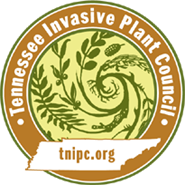Verbascum thapsus L.
Common Mullein| Category |
|---|
| Forb/Herb |

Description
Height
Common Mullein grows to more than 6.6 feet (2 m) tall.Stem
The stem is a stoutly erect, sometimes branched, fuzzy flower stalk.Leaves
First year plants develop as a basal rosette of felt-like leaves in winter. Basal leaves are 4-12 inches (10.2-30.5 cm) long, 1-5 inches (2.5-12.7 cm) wide and covered with woolly hairs. The plant bolts in the second year. Cauline (stem) leaves are decurrent, alternate, and decrease in size toward the apex.Flowers
Flowering occurs in June to August, when five-petaled, yellow flowers develop at the apex of the shoot.Fruit
The fruit is an ovoid capsule. It splits releasing many seeds that germinate in fall.Images
Photo: Steve Dewey, Utah State University, Bugwood.orgMore images of Verbascum thapsus
Life History
Common Mullein is a monocarpic perennial (i.e., takes two or more years to flower and die). It is a member of the Scrophulariaceae family. Verbascum thapsus can be cross-pollinated, and flowers can also be autogamous, with self-pollination occurring at the end of the day if cross-pollination has not occurred. It is a prolific seed bearer and a single plant may produce 100,000-180,000 seeds. Seeds have no specialized structures for long distance dispersal. The capsule splits open when mature; movement of the stalk by wind or a large animal is required to release the seeds from the parent. Seeds remain viable in the soil for very long periods. Seedlings are known to be the initial species to emerge on bare or disturbed sites. Seedling emergence is limited by its rosette growth form. Its lateral spread does not enable it to rapidly grow above surrounding vegetation to reach stronger light. Flowering begins in the second year, and the plant rarely remains vegetative during its third year. Flowers mature on the stalk spiraling from the bottom up.Common Mullein is used medicinally as an expectorant, anti-inflammatory, antibiotic, astringent, and demulcent. It is especially soothing for the lungs, mucous membranes, and glands.
Habitat
Common Mullein is often found on roadsides, old fields, disturbed areas, vacant lots, wood edges, and in the middle of trails. It prefers alkaline soils with good drainage, likes full sun, and doesn’t mind poor soil.Origin and Distribution
Common Mullein was introduced to North America; first in Virginia, in the mid-1700s as a fish poison. It quickly spread throughout the U.S. and is well established throughout the eastern states. Records show that it was first described in Michigan in 1839 and on the Pacific coast in 1876, probably due to multiple introductions as a medicinal herb. It is originally native to Europe and Asia. The seeds are dispersed mechanically near the parent plant during the autumn and winter. Other States Where Invasive: CA, CO, GA, HI, SD, TN. Federal or State Listed as Noxious Weed, Prohibited, Invasive or Banned: CO, HI.Sources
Baskin, J.M. and C.C. Baskin. Seasonal changes in germination responses of buried seeds of Verbascum thapsus and V. blattaria and ecological implications. Can. J. Bot. 59: 1769-1775; 1981.Hoshovsky, 1986. Verbascum thapsus.
Maw, M.G. Cucullia verbasci an Agent for the Biological Control of Common Mullein (Verbascum thapsus). Weed Sci. 28(1): 27-30; 1980.
Remaley, 1998. Common mullein: Verbascum thapsus.
